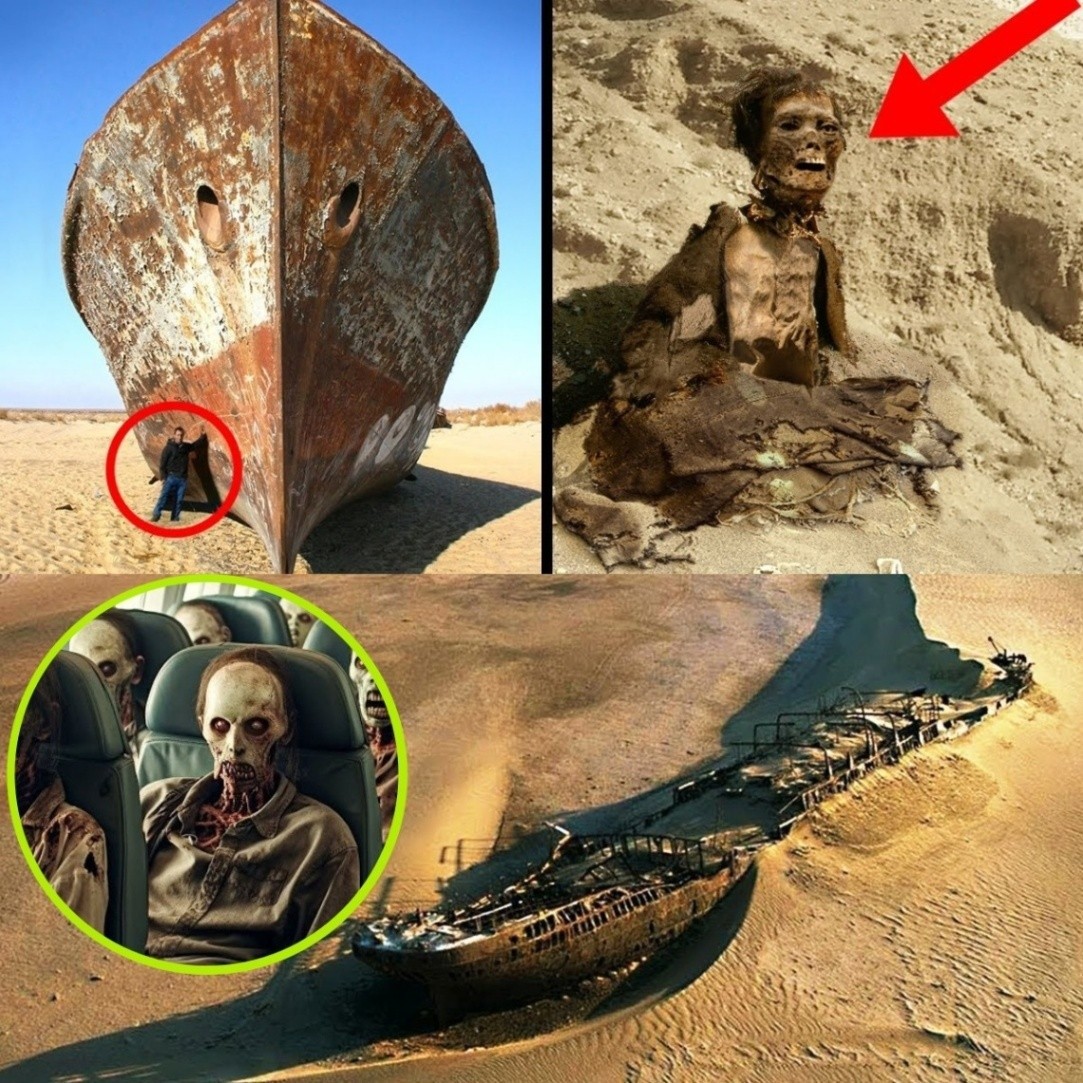Breaking Discovery: Lost Civilization Unearthed After Desert Ship Find

In a discovery that challenges everything we know about ancient history, archaeologists have uncovered a mysterious ship buried deep within an arid desert, hundreds of miles from any current shoreline. The remarkably preserved wooden frame of the vessel has led researchers to uncover an entire lost settlement, complete with pottery, tools, and carvings resembling hieroglyphics unlike any known culture. This astonishing find is raising profound questions about the origins of civilization and the ancient landscapes of our planet.
The Desert Ship: A Mystery Encased in Sand

The so-called “Desert Ship” was found perfectly preserved beneath shifting sands, its hull intact despite centuries of exposure to the harsh desert environment. Researchers are examining the vessel to understand its construction, materials, and potential purpose. Its presence in the heart of the desert is perplexing: how could a seafaring vessel end up so far from any ocean or navigable waterway?
Some experts hypothesize that the region was once submerged under a prehistoric sea, supporting maritime activity and trade routes long lost to geological changes. Others suggest the ship could indicate a previously unknown civilization with advanced navigational knowledge, capable of traversing rivers or inland waterways that have since vanished. The vessel’s discovery provides a rare opportunity to study not only maritime technology but also the environmental history of the desert itself.
Unearthing a Lost Settlement
Beyond the ship, the excavation revealed a sprawling settlement buried beneath the sand. Archaeologists have uncovered pottery fragments, stone tools, and intricately carved walls, suggesting a society that was both technologically adept and culturally sophisticated. The carvings, reminiscent of hieroglyphics yet distinct from known Egyptian or Mesopotamian scripts, hint at a previously unknown system of communication or record-keeping.

Preliminary analysis suggests the civilization flourished thousands of years ago, long before most recorded history, and eventually vanished under circumstances that remain mysterious. Environmental changes, desertification, or shifting trade routes may have contributed to its disappearance, leaving the desert to conceal the settlement until now.
Implications for Archaeology and History
The Desert Ship Mystery has the potential to transform our understanding of ancient civilizations, trade networks, and human adaptation to changing landscapes. It challenges assumptions that early societies were confined to well-documented river valleys or coastal regions, suggesting instead that advanced communities may have thrived in areas now considered inhospitable.
Furthermore, the discovery emphasizes the importance of interdisciplinary study. Geologists, archaeologists, and climate scientists are collaborating to reconstruct the ancient environment, trace the origins of the ship, and decipher the carvings. Each artifact, from the wooden hull to stone implements, contributes to a broader picture of a civilization that predates modern mapping and historical records.
Conclusion
The unearthing of the Desert Ship and its surrounding settlement offers a breathtaking window into a lost world. Whether it reflects a forgotten inland sea, an unknown civilization, or both, this discovery promises to rewrite parts of history and illuminate the ingenuity of early human societies. As excavations continue, the Desert Ship Mystery stands as one of archaeology’s most transformative finds—a reminder that even in the most unforgiving landscapes, the secrets of humanity’s past await those willing to uncover them.










